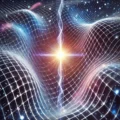EM Detection of Gravitational Waves via Long-Wire Antennas
Background Hypothesis
Gravitational waves are electromagnetic (EM) phenomena, propagating through the vacuum lattice (e₀μ₀ field), and thus should be observable using traditional EM detection methods — not only kilometer-scale interferometers like LIGO.
Experiment Concept: A “Poor Man’s LIGO” Using Beverage Antennas.
If true, this would:
Eliminate the need for exotic instrumentation that relies on spacetime deformation.
Enable use of conventional EM antenna technology at vastly lower cost and with greater deployability.
Requirements
| Antenna Type | Beverage Antenna (low-noise, unidirectional VLF/ELF) |
| Length | Modular: 1, 10, 50, 100 miles (directionally staggered for signal triangulation) |
| Target Frequencies | 0.1 Hz – 10 kHz (covering ELF to VLF chirps; check Schumann resonances) |
| Detector | Software-Defined Radio (SDR) + ultra-stable clocking (GPS-disciplined) |
| Signal Processing | Real-time DSP with chirp detection algorithms; match-filter against LIGO data for known events |
| Power | Solar + battery packs, minimal per module |
| Deployment Zone | Nevada desert – low EMI, legal land access, and stable dry ground |
Principle of Operation
Beverage antennas are very long wave antennas – on the order of 2 to 5 wavelengths. If extended to extreme lengths (~1 to 100 miles), low-height wire antennas that are exceptionally sensitive to low-frequency, long-wavelength EM waves.
Resonant sensitivity of wire length to specific EM wavelengths
Chirp-based waveforms produced by inspiral events, where frequency increases as black holes/neutron stars merge.
Phase-coherent summing from a geographically spread array to detect EM chirp signals correlated with gravitational wave events.
Hypothesized Detection Spectrum
LIGO operates in the range of 10 Hz to ~5 kHz, with most black hole mergers peaking between 50 Hz and 250 Hz.
If gravitational waves are EM in nature, the corresponding EM wavelengths would be:
Using λ=cf where c = 3 x 108 m/s, 250 Hz=1,200 km, and 50 Hz=30,000 km
This is far beyond typical Beverage antenna designs — but we can adapt.
Experimental Design
Array Design:
Antenna Type: Beverage-style long-wire antennas, terminated for directionality.
Length Range: ~10 km to 200 km. Shorter sections can be used to estimate responsiveness at harmonic lengths.
Location: Remote Nevada BLM land, low-noise environment ideal for VLF experimentation.
Orientation: Multiple azimuths to maximize sky coverage and directional sensitivity.
Ground Coupling: Critical — Beverage antennas must be close (~1-2m) above ground for optimal low-angle reception.
Instrumentation:
Amplifiers: Low-noise VLF preamps
Filters: Band-pass filters centered on the 10–1000 Hz range.
Digitizer: High-resolution ADCs sampling at ~10 kHz or higher for resolution of chirp signals.
Timing: GPS-synchronized clocks for phase correlation with known LIGO chirps.
Data Capture: Rolling buffer for real-time comparison with LIGO’s public event alerts.
Signal Detection Strategy
Monitor LIGO Event Alerts (public API feed).
Compare captured waveform patterns in antenna signals (esp. chirp structures) to LIGO event signatures.
Triangulate timing and phase difference across antenna segments to estimate wavefront direction and speed.
Perform statistical cross-correlation of recorded EM events with LIGO gravitational events — ideally over months of data.
Confirm deviation from known EM interference (lightning, VLF radio, Schumann resonance, etc.)
Theoretical Challenge
The key scientific scrutiny here is: If gravitational waves are EM waves, why has no antenna ever detected them, even passively?
Possible answers:
Existing systems filter out ultra-low-frequency noise as irrelevant.
Long wavelength EM noise is often masked by natural EM background (Schumann resonances, solar wind).
LIGO’s chirps may still produce EM spectral fingerprints not previously identified due to lack of continuous wide-aperture listening.
Experimental Advantages
| Feature | LIGO | Beverage Antenna Array |
| Detection Mode | Optical interferometry | EM induction |
| Medium Sensitivity | Spacetime strain (10⁻²¹) | Electric field perturbation (V/m) |
| Frequency Range | 10 Hz–5 kHz | 1 Hz–30 kHz+ (VLF) |
| Deployment Cost | ||
| Accessibility | Centralized, rare | Widely deployable |
| Replicability | Complex | Straightforward |
Plan
Literature Review on VLF detection experiments near LIGO events.
Build prototype 1–2 km antenna with digitizer to test background EM noise floor.
Time-synchronize with LIGO open data for events.
Cross-validate signal correlation with real events.
Expand array as needed based on signal fidelity.
